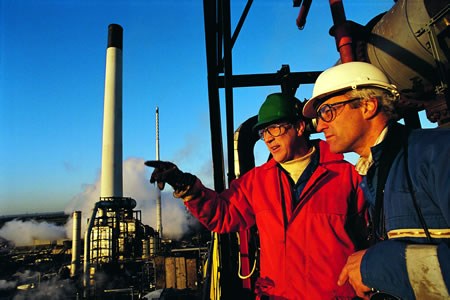The demand for engineers and technologists is expected to increase more than three per cent over the next two years, before hiring levels off because of the slumping North American economy.
That is one of the early findings of a labour market snapshot released by two national professional regulatory bodies.
A study, jointly sponsored by Engineers Canada and the Canadian Council of Technicians and Technologists, takes a look at the market needs of engineers, technologists and technicians by discipline, industry and region.
"The pressure is clearly on in the Western provinces in '08 and '09," said Kim Allen, CEO and Registrar for the Professional Engineers of Ontario.
In Alberta, Saskatchewan and Manitoba, there's supply premiums in place, along with Quebec and Atlantic Canada.
The biggest demand is in the petroleum sector and with good demand on most other areas. The lightest demand is in the chemical industry.
Some issues in the report revealed:
- Two-thirds of university-trained engineers were working outside their field. It was 80 per cent of those trained outside Canada.
- Internationally-trained engineers make up only 20 per cent of Canada's engineering workforce.
- Census figures revealed 30 per cent of people working in engineering occupations are not university engineering graduates. The authors of the report think that's high and warrants consideration by regulatory bodies.
The interim labour market report, entitled Engineering and Technology Labour Market Study, the Results So Far, is available online at Engineers Canada (www.engineerscanada.ca).
The final report out in the first quarter of 2009.
Overall, Allen said, "the demand for engineers is about double what the normal workforce is."
Allen said there's always shortages of people with sufficient qualifications, but there's a real shortage in electrical tranmission distribution engineers and, until recently, there had been a shortage of mining engineers.
Allen said, all engineering firms, particularly those engaged in infrastructure work, "are going hard." Other firms engaged in manufacturing and resource-based sectors, which rely on capital markets, are feeling the pinch.
On the issue of a federal economic stimulus, Allen said the PEO doesn't advocate on whether more government money should be pumped into the economy, it only regulates the practice such as professional performance standards.
Allen said many their members working on roads, water mains, university and hospital construction sense a strong commitment from both levels of government that infrastructure is an issue that needs to be dealt and plans are being put in place to make it happen.
Provincially, Allen said Ontario engineering schools enrolment is up over eight per cent in 2008 from the year before.
But the PEO is noticing a drop-off in the number of internationally-educated engineers coming to Ontario.
The PEO has its own program to cut red tape and help fast-track the immigration process by assessing credentials before they arrived in Canada. On a yearly basis, they handle about 400 to 500 applicants.
About 3,500 internationally-trained engineers arrived in Ontario in 2007. That's a dramatic drop-off from the early part of this decade, when the figures were closer to 10,000.
To influence government on these issues, the PEO has created a Centre for Engineering and Public Policy. It's mandate is to influence Ottawa and Queen's Park on issues related to infrastructure, environment and technology. Conversely the PEO's think thank will listen to what the government would like the profession examine on their behalf.
Allen said the intent is to work hand-in-hand with government.
He harbours no doubt that will Ottawa make good on its proposed $6.2 billion national infrastructure program and that there's enough qualified engineers to tackle it.
"Infrastructure work provides all kinds of downstream work, with engineering on the front end of design and to ensure project management is in place."




